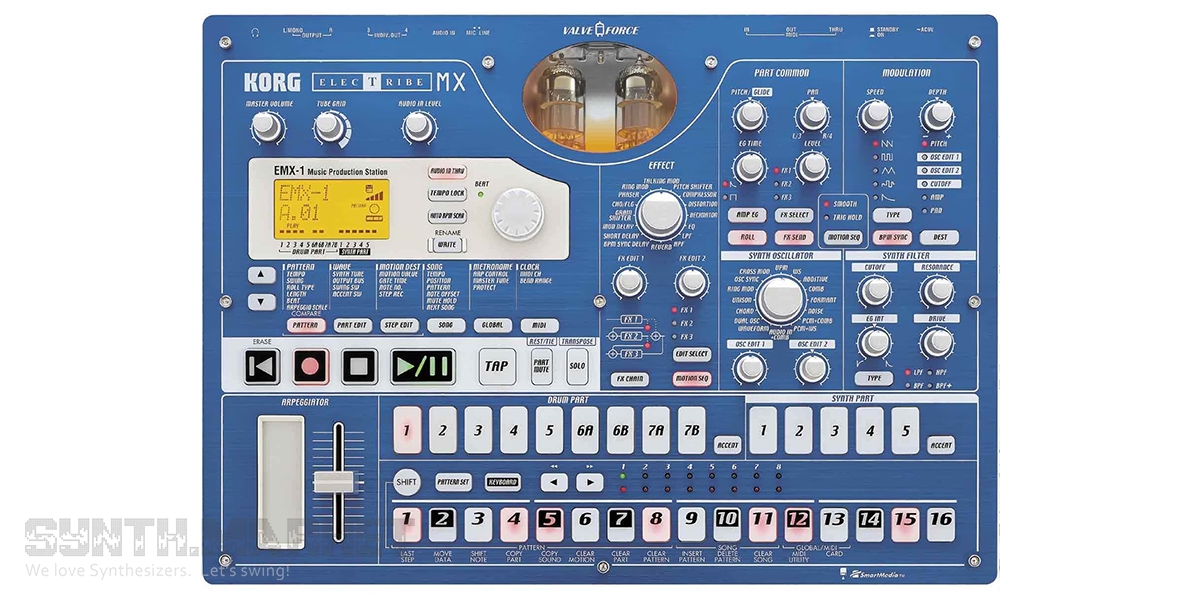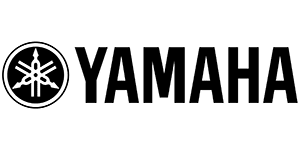Korg Electribe MX: A Comprehensive Guide
Historical Context
Released in 2003, the Korg ElecTribe MX (EMX-1) represented a significant evolution in the ElecTribe series, introducing substantial improvements in both interface design and sound quality. The instrument, affectionately known as the "blue box," established itself as the unprecedented leader of its series.
Overview
The Korg EMX1 stands as a robust all-in-one composition tool, immediately distinguished by its solid metal construction and impressive array of controls. The device features 20 knobs, a slider, a ribbon controller, and 68 buttons, all housed within a metallic-blue front panel. One of its most striking features is the pair of visible valves behind the front panel window, though interestingly, their glow comes from yellow LEDs rather than the tubes themselves.
Core Technology
The EMX1's sound engine is built around Korg's Multi Modelling Technology (MMT), featuring:
- 16 different oscillator algorithms
- Physical modeling synthesis
- Extensive synthesis capabilities:
- Additive synthesis
- PCM playback
- Dual oscillator configurations
- Wave shaping
- Unison mode
- Formant models
- Ring modulation
- Cross modulation
- Valve Force vacuum tube circuit
- Real-time arpeggiator
- Motion Sequencing capability
Voice Architecture
Multitimbral capability:
- 9 percussion/ drums sounds (sample-based waveforms)
- 5 synth parts
- Dynamic component accent function (maximum 16 parts)
Each part includes:
- Extensive EG Modulation capabilities
- Low Frequency Oscillator (LFO)
- Filter section
- Effect routing
Synthesis Architecture
Each of the five synth parts includes:
- 16 oscillator types with 258 total variations
- Multi-mode filter (low-pass, high-pass, band-pass, band-pass+)
- Basic envelope generator
- Modulation section with tempo-sync'able LFO
- Pan and level controls
- Effect send options
Drum Section
- 207 PCM waveforms available
- Synth-style parameters including:
- Tuning
- EG
- Level
- Pan
- Effect send
- Limited modulation (pitch and pan only)
Effects Processing
Three parallel processors, each offering:
- 16 effect types
- Two editable parameters per effect
- Effect types include:
- Reverb
- Tempo-synced delay
- Ring modulation
- Modulation delay
- Chorus/flanger
- Phaser
- Talking modulation
- Pitch-shift
- Distortion
- Decimator
- EQ
- Filters
- Grain-shifter
Sound Library
Built-in PCM collection:
- 207 drum samples (ranging from aggressive kicks to light snares)
- 76 classic and organic timbres
External audio processing capability.
Sound Design Workflow
The EMX1 takes an integrated approach to sound design and sequencing. Rather than offering separate voice memories, sounds are created within the context of each Pattern. This encourages fresh sound design for each composition while maintaining flexibility through copy functions between Parts and Patterns.
Sequencing Capabilities
- Pattern length: up to 8 bars
- Time signatures:
- 16 16th-note steps (4/4)
- 16 32nd-note steps
- 12 eighth-note triplets
- 12 16th-note triplets
- 256 Pattern locations
- 64 Song locations
- 256 Pattern steps per Song
- 20,000 event capacity for overdubs
- Real-time recording with timing, pitch, and length editing
- Step sequencer with continuous button press recording
- Motion Sequencing: up to 24 parameter automation tracks per Pattern
Arpeggiator Features
- Ribbon controller integration
- Two-octave range
- Multiple scale types:
- Chromatic
- Modal scales
- Simple intervals (fourth, fifth, octave)
- Adjustable playback feel
- Real-time recording capability
Performance, Integration, Technical Specifications
Audio Connectivity
- 2 main audio outputs
- 2 assignable individual outputs
- Mono audio input (mic/line level)
- Headphone output
- MIDI In/Out/Thru
MIDI Implementation
- Comprehensive MIDI control
- Individual MIDI CC and NRPN assignments for parameters
- Pattern Set feature for live performance
- External MIDI keyboard input support
Storage and Backup
- SmartMedia card slot
- MIDI dump capability
- Factory pattern restore option
Strengths and Limitations
Notable Advantages
- Intuitive, immediate interface
- Rich, versatile sound generation
- Innovative arpeggiator implementation
- Effective valve circuit integration
- External audio processing capability
Design Compromises
- Mono-only audio input
- Basic envelope generators
- Limited effects routing flexibility
- No footswitch inputs
- External power supply required
Conclusion
The EMX1 represents a powerful hardware-based music production solution that balances comprehensive features with immediate usability. While it has some limitations in areas like envelope control and effects routing, its strength lies in its ability to quickly generate creative results through a hands-on interface. The combination of physical modeling synthesis, valve processing, and intuitive sequencing makes it a compelling option for both studio and live applications.
Tags:















